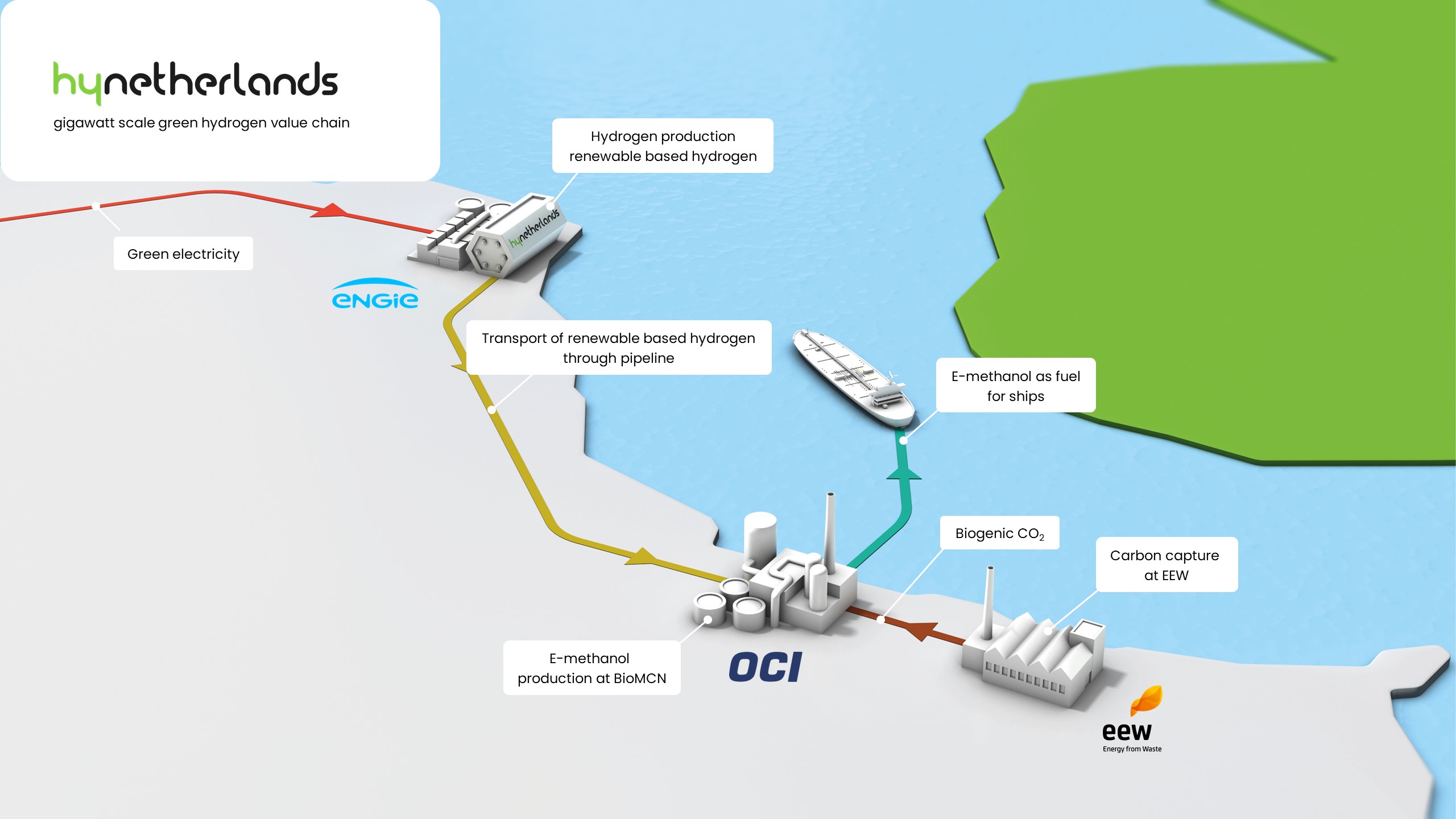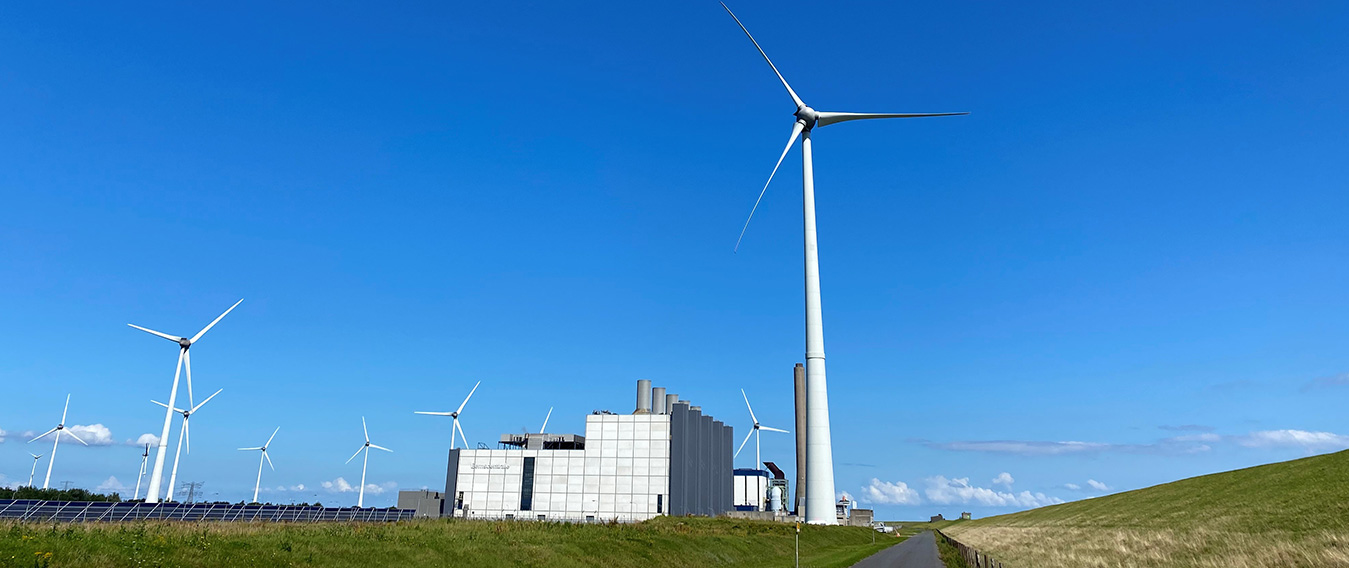The ENGIE solution consists of creating a complete green hydrogen value chain that contributes to the decarbonisation of industry and heavy mobility in the north-east of the Netherlands.
The HyNetherlands project, which was launched in 2019 and is due to become operational in 2025, represents a major project for the renewable hydrogen roadmap in the Netherlandss. It brings together ENGIE, OCI, Europe's leading producer of methanol, and EEW, a leading company in the production of electricity and heat from the thermal recovery of waste.
The HyNL project, located in the north of the Netherlands (Groningen province), links three industrial sites:
- Eems power plant in Eemshaven, where ENGIE is building a new 100 MW electrolyser installation, five times larger than existing models on the market. The plant will be powered by the renewable electricity production of the offshore wind fields in the North Sea. The hydrogen produced will be delivered to OCI. ENGIE will be responsible for the coordination, development, delivery and maintenance of the HyNetherlands project.
- The waste-to-energy plant in Farmsum, which will integrate EEW's carbon capture plant. It will capture biogenic CO2 from the flue gases of the plant's production lines. The CO2 logistics and infrastructure will be provided by Groningen Seaports.
- The Delfzijl Chemical Park in Farmsum, where OCI's BioMCN subsidiary,methanol facility will be located, to combine hydrogen and biogenic CO2 for the production of e-methanol.
The ENGIE and OCI/BioMCN plants will be connected to the hydrogen network developed by Gasunie across the Netherlands and northern Germany. The network, currently used for natural gas transportation, will transport this hydrogen to nearby chemical plants, which will use it as a raw material to decarbonise their output. The hydrogen will also provide fuel for heavy goods vehicles and local passenger trains.
“ENGIE has brought together the different skills in the Group required to develop this exceptional project. HyNetherlands will connect the massive offshore wind power resources to domestic industry and heavy transport using the transport capacities and storage capacities in salt caverns. In this respect, HyNetherlands is the precursor of a future European hydrogen hub.”
Grégory Bartholomé, HyNetherlands Project Manager
“The HyNL roadmap paves the way towards an effective European renewable energy hub and will offer a decarbonisation solution to multiple industry sectors with a high carbon footprint.”
Cedric Osterrieth – Managing Director ENGIE Thermal Europe
Key figures
- 1st electrolysis installation in terms of capacity (100 MW)
- Capacity to produce 1.85 GW of renewable hydrogen in the future on the site of the Eems electricity power plant.
- 2025: start-up of the production, phase 1.

